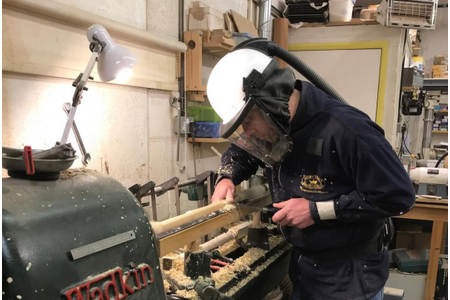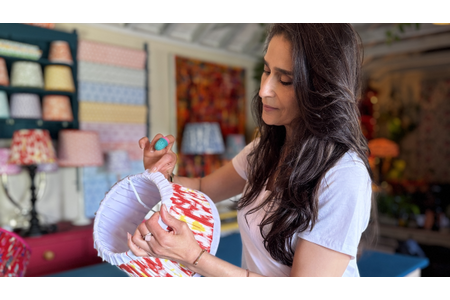Meet the Maker: Sarah Villeneau
In this latest instalment of Meet the Maker, Ceramic Artist and new short course tutor Sarah Villeneau shares where it all began, the joys of working with clay and why it's so important to experiment and play in the creative process.
Can you share a bit about your journey and how you got started with ceramics?
As a child I never had any thoughts of being an artist, though I suppose I was quite creative - but that was more putting on puppet shows and collecting natural objects and wild animals - snakes and mice and spiders! However, in my 20s I did an evening class in pottery and instantly fell in love with clay - somehow the world made sense through this magical material. I pretty quickly gave my notice in at the secure office job I had and became a bicycle dispatch rider in London to support myself attending an arts and crafts course at what was then the Sir John Cass School of Art. It was a great course with fantastic tutors.
I can’t say I was particularly well supported by those around me to do this - I think there was a feeling that I would eventually settle down and come to my senses! No such luck, though. It’s not been easy, with many family moves, children and eventually single parenthood. However, I did carry on making throughout as I never doubted my choice, and have never lost my commitment and enthusiasm for making.
Can you share a memorable experience or moment in your career?
When my children left home, I straight away applied to Loughborough University to do an MA. This gave me the space, time and facilities to really push myself and find my voice. Towards the end of the course, I created a sculpture that had come from so deep within that I was completely floored by it - where had it come from, where would it take me, what do I do now? It was a very, very, powerful experience and a very powerful piece. It marked a significant step away from the vessel form into abstract ceramic sculpture.
What inspires your work?
I am inspired broadly by organic form on a macro and micro scale and everything in-between. The thoughts that drive my work are to do with our relationship to nature, which we refer to as if we are not a part of it. I am trying to capture, without being literal, the idea that what we find in our bodies is echoed out there all around us - that there is a language of nature of which we are just one small part and that it is all interconnected. I try to capture these ideas through an imaginary world of textural, tactile and visceral forms that seem familiar but can’t quite be identified, bringing our knowledge and certainty about the world into question.
How important do you think it is to experiment and play in the creative process?
I think it’s vital to experiment and play - I see the creative process as a problem-solving exercise, where you are constantly testing the material, testing your skills and your ideas, pushing, pushing, pushing. Clay is such a versatile and responsive material - the possibilities are endless. It’s a journey of constant discovery. This is what keeps me going.
Can you tell us why you enjoy working with clay? What qualities make it an ideal material to sculpt with?
I love the responsiveness of clay, the unexpected ways that it can behave, the way that it can throw up new ideas. It’s so expressive and versatile. Every touch you make leaves an impression. For me, it’s a dialogue between my hands and the material. Clay is very suggestive of the body and organic form in its materiality and as a cultural reference, which suits my purposes very well.
I love also that it is non-precious, that it is of the earth, so basic, and can be endlessly recycled, but that the firing process is transformational, magical, alchemical, echoing (in my mind) geological processes, as if the whole creation of the substance of the world has happened inside the kiln over night.
You are teaching the short course ‘Organic sculptures in clay’ at West Dean in February – what can students expect from the course?
Students can expect the opportunity to learn new and perhaps some slightly unusual hand building skills, to have time to explore, play and experiment in an environment where there is no such thing as failure, or the ‘right way’ to do things. They will be equipped with a whole new repertoire of textural effects and ideas about semi-abstract form. They will be supported to find their own voice and direction to create a final piece to which some colour can be applied. There will be plenty of source material on hand for inspiration and plenty of tutor knowledge and experience to share.
Students will also be introduced to the idea of incorporating other materials both pre and post firing and we may go out foraging for found objects in the grounds of West Dean, weather depending! (Please be aware pieces will not be fired before the end of the course, so adding materials post firing will be something for students to do in their own time after the course.)
I hope that the course will open up a new way of working with clay and that students might create work that surprises them, bringing new possibilities.








